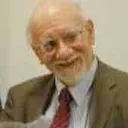Stay in the Loop
BSR publishes on a weekly schedule, with an email newsletter every Wednesday and Thursday morning. There’s no paywall, and subscribing is always free.
MirÓ³ Quartet's "Necronomicon'

A horror story with a happy ending
TOM PURDOM
H.P Lovecraft wrote horror stories, fantasies, and borderline science fiction for the pulp magazines in the 1920s and ’30s. Most of his work appeared in Weird Tales, a magazine that specialized in stories involving mysterious happenings, evil sorcerers and adventures in ancient devil-ridden kingdoms. The Library of America series recently added a collection of Lovecraft’s stories to its offerings— a development that means he now occupies the same shelf as Henry James and Ernest Hemingway.
I haven’t read much of Lovecraft. I don’t like horror stories and I’ve never understood why anyone does. To me, Lovecraft has always been a creepy guy who lived on peanut butter and jelly sandwiches while he sat in an attic penning endless letters to his fans and writing unpleasantly squirmy opuses for penny-a-word magazines. I read every word of L. Sprague de Camp’s 1975 biography of Lovecraft and it only reinforced my bias.
Lovecraft’s prose style is one of the great jokes of the science fiction community to which I belong. His critics like to note that his favorite adjective was “indescribable.” The typical Lovecraft story, according to the parodists, is a narrative about indescribable monsters that engage in unspeakable acts while they perform nameless rites.
Humans vs. cockroaches
Still, anyone who started reading science fiction in the 1950s, when I did, automatically acquired some knowledge of Lovecraft’s work. He had been a well-known writer during the pulp era that spawned modern science fiction, and he enjoyed a vocal following among science fiction and fantasy fans.
Lovecraft’s best-known creation is a series of borderline science fiction stories that became known as the “Cthulu mythos” (choose your own pronunciation). In these stories, the underlying horror is a vision of the universe in which humans are no more important than cockroaches. The monsters in the stories are the survivors of an ancient super race that may have come here from Outside.
At the heart of the mythos is a book of ancient lore called the Necronomicon. The writers in Lovecraft’s circle picked up the title and had a good time including references to the Necronomicon in their stories.
This non-existent book has become so famous that composer John Zorn has now given us a Necronomicon Quartet. Howard Philips Lovecraft has once again risen from his grave and triumphed over those who say unspeakable things about his contribution to American culture.
The forgotten man
Or has he? The violist for the Miró Quartet, John Largess, spoke for several minutes before the Philadelphia premiere of Zorn’s quartet and didn’t mention Lovecraft once. Largess described the Necronomicon in general terms, as a book of ancient spells used to summon demons. For all the audience learned, it could have been a standard feature of the Arabian Nights. And when I discussed the quartet with several members of the Philadelphia Chamber Music Society audience, I discovered none of them had even heard of Lovecraft.
I attended the concert with my friend Michael Swanwick, who’s perhaps the most prominent science fiction and fantasy writer currently living in Philadelphia. As Michael notes in his blog, “clearly Zorn had not actually read Lovecraft's works, but only heard about them second hand.” The composer’s comments available on the Web support that conclusion.
From the beautiful to the deliberately ugly
The quartet itself is an outstanding success. As Largess noted, its five movements run the gamut from the beautiful to the deliberately ugly and create moods that range from the serene to the string-breakingly furious.
The second and fifth movements are good examples of the quartet’s range. The second movement, “The Magus,” is a beautiful evocation of mystery. It’s eerie and solemn and creates its effects with understanding and imagination, the way a good poet chooses words that are both accurate and unexpected.
The final movement depicts the raising of a powerful demon, and it has the most affinity with Necronomicon’s literary origins. It is crude and melodramatic— as it should be— with touches such as a moment when the four instruments rasp like saws ripping in unison.
The standard repertoire contains a long list of pieces inspired by fantasy and even horror. It’s a musical tradition that goes back to the Renaissance. If I had to choose between Zorn’s Necronomicon and Berlioz’s Symphonie Fantastique, I would give the prize to Zorn’s quartet. Necronomicon is a better expression of the true spirit of fantasy and magic.
To read responses, click here.
TOM PURDOM
H.P Lovecraft wrote horror stories, fantasies, and borderline science fiction for the pulp magazines in the 1920s and ’30s. Most of his work appeared in Weird Tales, a magazine that specialized in stories involving mysterious happenings, evil sorcerers and adventures in ancient devil-ridden kingdoms. The Library of America series recently added a collection of Lovecraft’s stories to its offerings— a development that means he now occupies the same shelf as Henry James and Ernest Hemingway.
I haven’t read much of Lovecraft. I don’t like horror stories and I’ve never understood why anyone does. To me, Lovecraft has always been a creepy guy who lived on peanut butter and jelly sandwiches while he sat in an attic penning endless letters to his fans and writing unpleasantly squirmy opuses for penny-a-word magazines. I read every word of L. Sprague de Camp’s 1975 biography of Lovecraft and it only reinforced my bias.
Lovecraft’s prose style is one of the great jokes of the science fiction community to which I belong. His critics like to note that his favorite adjective was “indescribable.” The typical Lovecraft story, according to the parodists, is a narrative about indescribable monsters that engage in unspeakable acts while they perform nameless rites.
Humans vs. cockroaches
Still, anyone who started reading science fiction in the 1950s, when I did, automatically acquired some knowledge of Lovecraft’s work. He had been a well-known writer during the pulp era that spawned modern science fiction, and he enjoyed a vocal following among science fiction and fantasy fans.
Lovecraft’s best-known creation is a series of borderline science fiction stories that became known as the “Cthulu mythos” (choose your own pronunciation). In these stories, the underlying horror is a vision of the universe in which humans are no more important than cockroaches. The monsters in the stories are the survivors of an ancient super race that may have come here from Outside.
At the heart of the mythos is a book of ancient lore called the Necronomicon. The writers in Lovecraft’s circle picked up the title and had a good time including references to the Necronomicon in their stories.
This non-existent book has become so famous that composer John Zorn has now given us a Necronomicon Quartet. Howard Philips Lovecraft has once again risen from his grave and triumphed over those who say unspeakable things about his contribution to American culture.
The forgotten man
Or has he? The violist for the Miró Quartet, John Largess, spoke for several minutes before the Philadelphia premiere of Zorn’s quartet and didn’t mention Lovecraft once. Largess described the Necronomicon in general terms, as a book of ancient spells used to summon demons. For all the audience learned, it could have been a standard feature of the Arabian Nights. And when I discussed the quartet with several members of the Philadelphia Chamber Music Society audience, I discovered none of them had even heard of Lovecraft.
I attended the concert with my friend Michael Swanwick, who’s perhaps the most prominent science fiction and fantasy writer currently living in Philadelphia. As Michael notes in his blog, “clearly Zorn had not actually read Lovecraft's works, but only heard about them second hand.” The composer’s comments available on the Web support that conclusion.
From the beautiful to the deliberately ugly
The quartet itself is an outstanding success. As Largess noted, its five movements run the gamut from the beautiful to the deliberately ugly and create moods that range from the serene to the string-breakingly furious.
The second and fifth movements are good examples of the quartet’s range. The second movement, “The Magus,” is a beautiful evocation of mystery. It’s eerie and solemn and creates its effects with understanding and imagination, the way a good poet chooses words that are both accurate and unexpected.
The final movement depicts the raising of a powerful demon, and it has the most affinity with Necronomicon’s literary origins. It is crude and melodramatic— as it should be— with touches such as a moment when the four instruments rasp like saws ripping in unison.
The standard repertoire contains a long list of pieces inspired by fantasy and even horror. It’s a musical tradition that goes back to the Renaissance. If I had to choose between Zorn’s Necronomicon and Berlioz’s Symphonie Fantastique, I would give the prize to Zorn’s quartet. Necronomicon is a better expression of the true spirit of fantasy and magic.
To read responses, click here.
Sign up for our newsletter
All of the week's new articles, all in one place. Sign up for the free weekly BSR newsletters, and don't miss a conversation.

 Tom Purdom
Tom Purdom